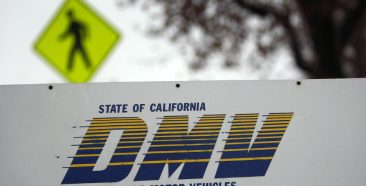
Thinking about financing a new or used vehicle? One thing to consider is how much your car insurance will cost. In most cases, your lender will require what is known as full coverage. This 3-part coverage consists of liability insurance, plus collision and comprehensive coverage. So, before you sign on the dotted line, let’s explore what type of insurance policy you’ll need to buy with a financed automobile.
Why Car Insurance is Important for Financed Cars
When you borrow money to purchase your new wheels, the company loaning that money has a vested interest in the car. This car, in effect, belongs to them until you pay off your loan. It’s the collateral the company has to make sure you continue to pay them. A wrecked, totaled or stolen vehicle is worthless, so if you stop making payments, the lender has nothing to repossess and sell to try and make up the loss.
Minimum Requirements for Financed Vehicles
Most vehicle financers require, at a minimum, collision coverage and comprehensive. The state you drive in requires liability to help offset the costs associated with a wreck you cause, such as injuries and property damage. How much car insurance you need depends on where you live and your lender.
State-by-State Requirements
Every state sets a different amount of state-required minimum liability insurance. These totals are set by law in the state legislature. Some states have ridiculously low requirements, such as California car insurance, which only requires $5,000 in property damage liability and $15,000 for bodily injury/death per person – a fairly low bar with today’s medical, vehicle, and repair costs. Other states have much higher liability requirements, such as Alaska’s auto coverage, which requires its residents to carry $50,000 bodily injury per person and $25,000 property damage.
You’ll have to decide for yourself if you are comfortable with the minimum requirements. Many drivers increase the limits up to $100,000 for bodily injury/death per person and $100,000 for property damage. This is because any amount due over your policy limit will come out of your pocket.
Liability Coverage
Liability consists of bodily injury and property damage. In most states, it is designed to help pay for injuries and damages suffered by others if you cause an accident. Bodily injury kicks in to help pay for medical expenses, pain and suffering, loss of income, funeral expenses and legal defense fees if you are sued.
Property damage is intended to help pay for any damage you cause to another person’s property if you cause an accident. This could be someone’s vehicle, house or fence.
Recommended Coverages
Your state sets a required level of minimum coverage. Most experts recommend a higher level than that to be fully protected financially. For example, if you hydroplane into someone’s new Lexus, the repairs will probably cost more than the state-required minimum. Anything over your policy limit comes out of your pocket (or you can be sued for the rest, which may mean your assets can be seized). And there will be no money coming from your insurer to pay for your own damages and injuries.
States do not require collision or comprehensive, but these coverages (and others) are recommended. With these two add-ons, it doesn’t matter if you are at fault. You’ll still have the necessary funds to repair your own vehicle – even if something happens when you are not driving, like your vehicle is stolen.
Your friendly neighborhood agent is happy to help you with choosing the right auto insurance for your situation.
Collision and Comprehensive
Collision and comprehensive are the two parts of full coverage that your lender requires you to have if you financed your vehicle. Both of these require a deductible and both kick in to repair or replace your ride in the event of a loss, regardless of fault.
As the names implies, collision covers repairs or replacement after your car collides with something else. Comprehensive kicks in for events that happen mostly when you are not even behind the wheel, like a storm that knocks a tree branch on your car.
Insurance Deductibles for Financed Cars
Your insurance deductible is the amount you will need to cover in the event of an approved claim. For example, if your deductible is $500 and your claim is for $2,000 worth of major body damage, you’ll pay $500 and your insurer will pay $1,500.
Some lenders will dictate the amount of your deductible. If so, you must abide by that. Depending on your credit status, you may be able to shop around for more favorable terms with another lender.
Balancing Premium Costs with Deductible Amounts
Your deductible amount has a direct influence on your premium. A higher deductible means a lower premium and vice versa. This is because with a higher deductible, you are assuming more of the costs of repair or replacement.
It may be tempting to set a high deductible to get a lower premium, but keep in mind that if you cannot afford to come up with that amount of money if necessary, you may have set yourself up for not having your claim paid out.

Proof of Insurance
In almost every state you must carry proof of car insurance with you when you drive. That used to consist of a piece of paper you kept in your console or glove box, and for many drivers, it still does. However, many states are beginning to allow drivers to show proof of insurance on a cell phone.
Not being able to show proof of insurance may result in a ticket for driving without insurance. This is a serious offense. If you do have coverage, you’ll still be required to jump through some hoops in order to stop the long arm of the law from suspending your driving privileges – or worse.
Many states also can check your insurance status in real-time if you are asked by a law enforcement officer. Some states even require insurance companies to report all new, lapsed and cancelled policies in real time.
Common Lender Documentation Requirements
Anytime you borrow money, your lender will want to see proof you have the ability to repay them. Common lender document requirements include proof of income and employment, your assets and debts, as well as many other types of information, such as divorce and bankruptcy filings.
As per your contract, you’ll also need to supply proof that you are carrying the financed car insurance requirements.
What is Lender-Placed Insurance?
If you fail to comply with your car loan contract by letting your insurance lapse or by purchasing less than the required amount, your lender may purchase the insurance for you and add the cost to your monthly payment. This lender-placed insurance can be anywhere from 4 to 10 times more expensive than insurance you find and buy on your own.
Can You Avoid Lender-Placed Insurance?
You can typically avoid lender-placed insurance by maintaining the requirements of your loan contract, specifically the requirement to carry full coverage insurance until your loan is paid off.
Protect Your Financed Car on the Road
Your new (or new-to-you) set of wheels is a point of pride. It’s always best to protect yourself with the right auto coverage – even after your vehicle is paid off. At Freeway Insurance, we can help you find a policy you can afford that satisfies your lender. And when you’ve finished that last payment and you want to adjust your coverage, we’ll be here for that, too. You can get a fast and free car insurance quote online, call us at (800) 777-5620 or stop by for a friendly visit at one of our convenient locations.



